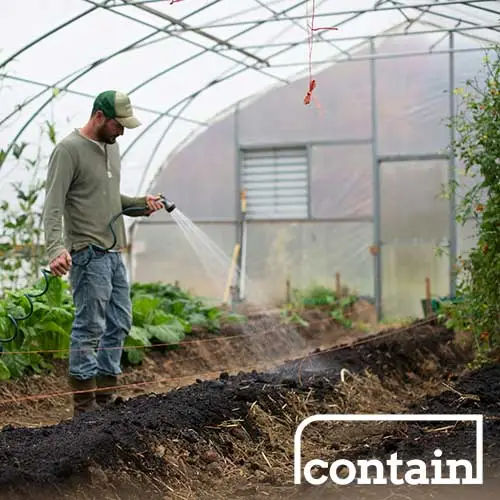April 11, 2022

Indoor agriculture's ESG credentials have become a topic of discussion in the vertical farming industry. Environmental, social and governance (ESG) issues have become a focus for investment, consumer and tech firms alike. They already inform the allocation of capital and we expect this trend to accelerate.
In this briefing paper, we outline indoor agriculture’s ESG credentials and examine its shortcomings.
Indoor farming allows anyone to become a farmer, even if they don’t have access to land or substantial financial resources. It uses less water and fewer pesticides than outdoor farming. It allows farms to be sited in food deserts or underprivileged areas. It enhances the built environment. Its major drawback is its high energy usage and farm profitability.
The industry continues to improve its energy efficiency, access to farming and plant biology, each of which add to indoor agriculture's ESG credentials.
Environmental Benefits
Indoor agriculture’s environment benefits are sometimes exaggerated by industry players, but its most commonly cited environmental advantages compared to outdoor farming are less water, land and pesticide usage, fewer food miles and less food waste.
Food Security
Food security has traditionally been the concern of developing nations and of those that import most of their food. A combination of war in Ukraine, a large grain exporter, and rapid food inflation has rendered food security an issue across the world.
Built Environment
The migration out of cities that new work from home practices have facilitated have in turn led to greater opportunities for urban farms.
Though plant biology has made great progress in the past few years, its use remains in its infancy in vertical farming. It has the potential to revolutionize the economics and reach of indoor agriculture.
Environmental Challenges
Indoor agriculture’s greatest environmental challenge is energy usage in vertical farms, where the reliance on LED lighting to stimulate plant growth means a bigger carbon footprint.
Around a third of operating costs for a vertical farms are energy-related, mostly for lights and HVAC. Energy usage is the greatest downside of vertical farms, as numerous industry critics have noted. Its importance has been highlighted by the increase of oil prices to well over $100/barrel.
Some indoor farmers are assuaging the issue by powering their farms with renewables, but these rely on there being sufficient land or roof space to house solar panels. Others choose to partner with utility firms that supply renewables-based energy.
Less directly, better optimization of farms through AI-based tech like plant light recipes in turn leads to less energy usage.
Download the full briefing paper on Contain Insights.

August Indoor Ag Update: M&A Galore & Indoor Specialty Crops Funding

July Indoor Ag Update: Acquisitions Accelerate & Funding Returns

Five Farms Making a Go of Indoor Agriculture

Dyson’s 250% Yield Breakthrough Headlines June AgTech: Vertical Farming Advances, M&A Activity, and Industry Setbacks

Indoor Agriculture Pivots to Home Gardens as Vertical Farming Failures Drive Strategic Reevaluation

Zordi Series B and May 2025 Indoor Agriculture Developments

Freight Farms Bankruptcy and iUNU’s $20M Raise Highlight April’s Indoor Ag Contrasts

Freight Farms Resources: Indoor Ag Companies Stepping Up to Support Freight Farmers

How to Finance Your Hydroponic Project in 2025: Finding Opportunity in a Shifting Market

Indoor Ag’s New Reality: Practical Advice from Investment Banker Adam Bergman

Plenty Unlimited bankruptcy dominates March’s indoor ag news, overshadowing new farm plans
